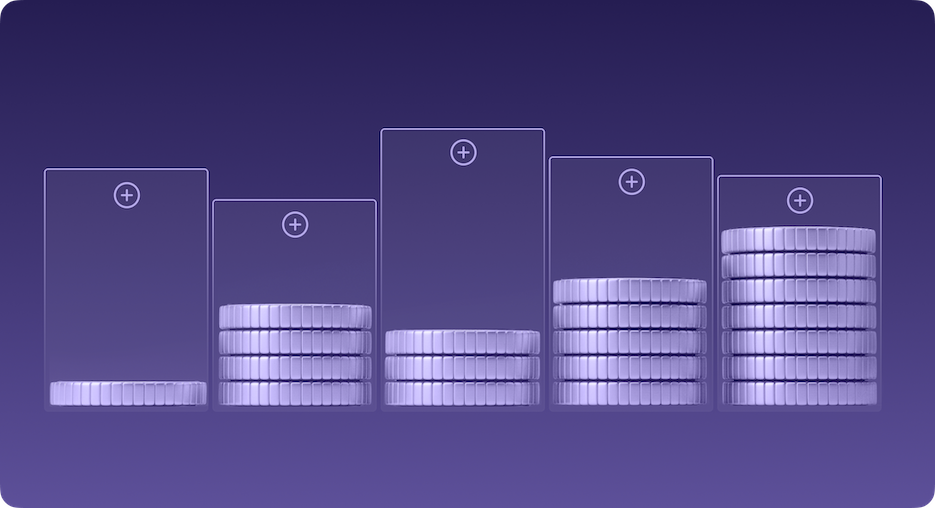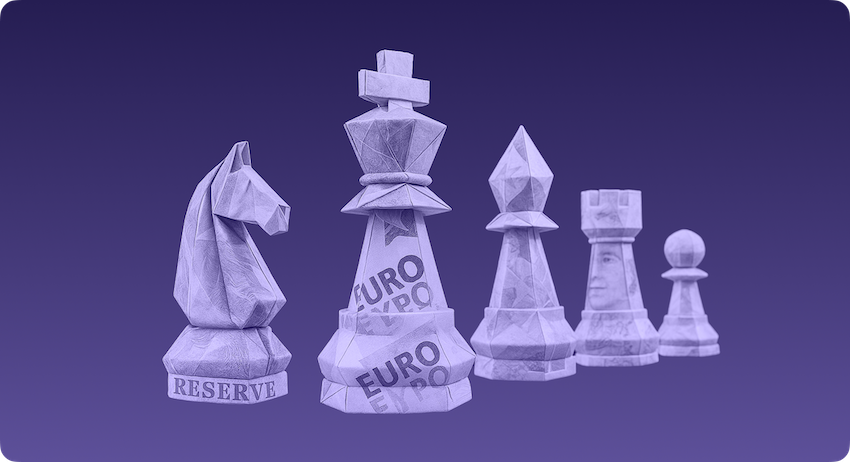Introduction: why cash flow analysis matters
Revenue is vanity. Profit is theory. Cash is reality.
If you're a founder, CFO, or operator in a startup, you know this firsthand. You can survive losses. You can’t survive a liquidity crisis. That’s why cash flow analysis is a strategic necessity.
This guide will take you deep into the world of cash flow analysis. We’ll keep it simple but never shallow. You’ll learn how to read your cash movements like a pro, spot risks before they blow up, and make better decisions for growth and survival.
What you'll learn in this article
- What is a cash flow analysis?
- How is a cash flow analysis conducted?
- Examples of cash flow analysis calculations
TL;DR
- With a cash flow analysis, you consider a company’s cash and non-cash revenues and expenses over a specific period, resulting in either a positive or negative value.
- A cash flow analysis consists of three areas: operating cash flow, investing cash flow, and financing cash flow. By analyzing these areas, you get insights into a company's liquidity, profitability, and financial stability.
- You can use the direct and indirect methods to calculate cash flow analysis.
Need a refreshment on cash management? Check our cash management guide for companies.
Definition: what is cash flow analysis?
Cash flow analysis is the process of tracking, understanding, and interpreting how cash moves through your business over a specific period. It reveals how much cash is generated, where it comes from, and how it’s used.
Also known as liquidity analysis or cash flow analytics, this process examines:
- Cash inflows from revenue, loans, or investments.
- Cash outflows from salaries, rent, loan repayments, and asset purchases.
Unlike a profit and loss statement that includes non-cash items like depreciation, cash flow analysis focuses only on actual cash movements.
Why it matters: it shows your company’s ability to meet obligations, invest in growth, and survive downturns. It goes beyond merely tracking cash in and cash out:
Cash flow analysis looks at where cash is coming from, how it’s being used, and what that says about a company’s financial health and future outlook.
Why do cash flow analysis?
You perform a cash flow analysis to:
- Assess liquidity: Can we pay our bills next month?
- Plan finances: When should we raise? Where can we save?
- Understand sustainability: Is the business model working?
- Support investment decisions: Do we have the cash for this expansion?
- Evaluate risk: Are we exposed to cash shortages?
- Monitor cash flow: How do certain metrics develop?
Use cases for an analysis of the cash flow
- During fundraising (investors love clear liquidity insights).
- Before major hiring or expansion.
- After a down quarter.
- When managing short-term survival.
Stay in control of your liquidity at all times
All bank accounts and balances in one place, precise liquidity planning and easy reporting. Use re:cap.
Try it 14 days for freeFoundation: understanding cash flow
To analyze cash flow properly, you need to understand its three sources:

1. Operating Activities
Cash generated from your core business. Think sales, salaries, supplier payments.
Covers core business activities
- Sales revenue
- Supplier costs
- Wages
- Office expenses
What it tells you
- Are we making enough from our core business?
- Do we rely on external funding?
Red flags
- Negative despite growing revenue = bad unit economics
2. Investing Activities
Cash used for or received from long-term assets. Buying or selling equipment, investing in other companies.
Covers investments in long-term growth:
- Property
- Equipment
- Asset purchases
Formula
Investing Cash Flow = Proceeds from Sales - Purchase Costs
What it tells you
- Is the company growing?
- Or selling off assets to stay afloat?
Red flags
- Constant negative flows without return
3. Financing Activities
Cash movements from financing your business. Loans, investor capital, dividend payouts.
Covers funding and repayments
- Loans taken
- Loan repayments
- Investor capital
- Dividend payouts
Formula
Financing Cash Flow = Inflows from Financing - Outflows to Repayments or Dividends
What it tells you
- Are we taking on too much debt?
- Are we too reliant on outside money?
Red flags
- High inflows, low operating performance
Each of these sources tells a different story about your company’s financial health.
How to do a cash flow analysis
Here are the five steps to run a complete analysis:
1. Data Collection
Gather all financial data: cash flow statement, bank statements, pre-accounting records, sales data, and expense reports.
2. Method Selection
Choose either the direct method (tracking every transaction) or indirect method (starting from net income).
3. Cash Flow Calculation
Calculate inflows and outflows by category (operating, investing, financing).
4. Result Analysis
Look for trends, imbalances, or warnings. Compare periods.
5. Reporting
Summarize findings. Suggest action. Build visual reports.
The two methods: direct vs. indirect
You can use two methods to conduct a cash flow analysis: direct and indirect.
Direct method for cash flow analysis
The direct method tracks every cash transaction individually. It is great for simplicity.
The formula for the direct method:
- Net Cash Flow = Cash Revenues – Cash Expenses
Example
- Revenue: €2,000,000
- Salaries: €800,000
- Rent: €300,000
- Supplier invoices: €200,000
Result
- €700,000 net cash flow
Pros
- Easy to interpret
- Precise overview of cash
Cons
- Labor intensive
- Needs complete records
Indirect method for cash flow analysis
The indirect method starts with net income and adjusts for non-cash items and working capital changes. It goes a step further and provides a deeper insight into the three cash flow areas besides total cash flow.
The formula of the indirect method:
- Cash Flow = Net Income - Non-Cash Revenues + Non-Cash Expenses
Example
- Net Income: €700,000
- Depreciation: €150,000
- Working capital changes: -€150,000
Result
- €700,000 cash from operating activities
Pros
- Commonly used
- Compatible with P&L data
Cons
- Less intuitive
Calculating cash flow
As mentioned, you can use two methods to analyze and calculate cash flow: direct and indirect method. For both methods, cash and non-cash revenues and expenses are relevant.
Cash flow analysis: direct method to calculate cash flow and example
In the direct method, you subtract all cash revenues from cash expenses within a specific period. Cash revenues and expenses related to actual cash flows, including:
Cash Revenues
- Revenue
- Loans and borrowings
- Tax refunds
- Interest income
- Dividends
Cash Expenses
- Salaries and wages
- Supplier invoices
- Rent
- Purchases of goods
- Utility costs
Cash flow analysis: indirect method and example
Due to its efficiency, the indirect method is more common for calculating cash flow. It can be derived directly from the income statement and uses non-cash revenues and expenses to determine the cash flow from operating activities.
Non-cash revenues and expenses are items in the income statement that affect the result but do not involve direct cash inflows or outflows, such as:
Non-Cash Revenues
- Reversal of provisions
- Reduction in retained earnings
- Withdrawal from reserves
Non-Cash Expenses
- Depreciation
- Creation of provisions
- Increase in retained earnings
Cash flow analysis: understanding cash flow
Now that we've determined the direct cash flow and seen an example of how to use the indirect method for calculating operating cash flow, let's look at the other areas.
With the indirect method, you can also calculate the investing cash flow and financing cash flow. It is advisable to consider all three areas for a comprehensive cash flow analysis, providing an accurate picture of the total cash flow.
Cash flow analysis with operating activities
Operating cash flow measures the liquidity generated from a company's core business activities. It shows whether the core business generates enough cash to cover operating costs without external financing.
What do operating activities indicate?
- Business efficiency: a positive operating cash flow indicates that the company operates effectively and can meet its liabilities.
- Sustainability: a consistently positive operating cash flow suggests that the business model is sustainable.
- Core business problems: a negative operating cash flow may indicate that the company is struggling to finance its operations, possibly requiring cost-cutting measures or increased sales.
Cash flow analysis with investing activities
Investing cash flow shows the cash flows generated by investments in long-term assets, including purchase and sale of assets such as real estate, machinery, or investments.
The formula for investing cash flow is: Income from the Sale of Assets – Expenses for the Purchase of Assets
What do investing activities indicate?
- Growth strategies: a negative investing cash flow suggests that the company invests in future growth by acquiring new assets.
- Divestment: a positive investing cash flow may indicate that the company is selling assets, possibly to generate liquidity or because the assets are no longer needed.
- Capital intensity: a high investing cash flow (positive or negative) indicates that the company is capital-intensive, meaning it regularly makes significant investments in long-term assets.
Cash flow analysis with financing activities
Financing cash flow shows the cash flows from financing activities, including loans, dividends, and other financial transactions with shareholders and creditors.
The formula for financing cash flow is: Income from Borrowings – Repayments of Loans and Dividends Paid
What does financing activities indicate?
- Capital structure: a positive financing cash flow indicates that the company is raising additional funds, through borrowing or issuing equity.
- Debt repayment: a negative financing cash flow suggests that the company repays debt or distributes dividends to its shareholders.
- Financing strategy: regular patterns in financing cash flow can provide insights into the company's long-term financing strategy.
With re:cap, you’ll bring clarity to all your cash movements. It shows all your account movements in one place, aiding top-line cash management and streamlining the flow of cash in and out of your business. This way, you’re able to perform better strategic planning to ensure financial stability.
Why is the cash flow analysis important?
Cash flow analysis is crucial. Companies get insights on how much money they spent and how much money is coming in. Plus, they can improve their cash flow planning. You can use this information to achieve various goals or evaluate different areas, including:
- Liquidity assessment: It shows if a company can meet its short-term obligations (operating costs or repayments). Cash flow analysis can help improve short-term liquidity.
- Financial stability: It provides insights into resilience against financial crises and aids in developing a financial strategy.
- Burn rate: the cash flow analysis can tell you something about the cash burn rate and how it develops.
- Investment decisions: It supports informed investment decisions.
- Profitability analysis supplement: It considers actual cash flows.
- Financial planning: It enhances the creation of financial plans and budgets.
- Risk analysis: Investors use it to make investment and credit decisions.
Interpretation of cash flow analysis
The three areas of cash flow are closely interconnected and influence each other.
Cooperation for liquidity assurance
Firstly, consider cooperation for liquidity assurance: With a positive operating cash flow, a company can invest in its future (investment cash flow) while simultaneously paying off debt or distributing dividends (financing cash flow).
Balancing through financing
The areas can also support each other in refinancing: If the operating cash flow is insufficient to make investments or repay debts, the company must rely on financing cash flow by taking out loans or raising equity.
Balancing investment needs through operational efficiency
A high investment cash flow can lead to a negative total cash flow in the short term. However, if the return on investment is positive, it can improve operational efficiency and operating cash flow in the long term.
Growth financing
Companies looking to expand via growth financing might intentionally have a negative financing cash flow to secure funds for investments, which can increase future operating cash flow.
Total cash flow compared to operating, investment, and financing cash flow
Assume we have the following information for a company:
- Cash flow from operating activities: €51,000
- Cash flow from financing activities: €15,000
- Cash flow from investing activities: -€20,000
We can calculate the total cash flow as follows:
€51,000 – €15,000 – €20,000 = €46,000 total cash flow
Summary: Cash flow analysis
Cash flow analysis is a crucial tool for understanding a company's financial health. Operating cash flow demonstrates the efficiency and sustainability of the core business, investment cash flow provides insights into growth strategies and capital intensity, and financing cash flow reveals financing strategies and capital structure.
All three combined, these cash flow areas offer a comprehensive view of a company's financial position and long-term prospects.
Q&A: Cash flow analysis
What is included in cash flow analysis?
Cash flow analysis examines the inflows and outflows of cash within a business over a specific period. It assesses a company's liquidity, solvency, and financial flexibility by analyzing how cash is generated and utilized across operations, investments, and financing activities.
What is the formula for cash flow analysis?
What indicates a good cash flow?
A "good" cash flow means more money is coming in than going out, especially from operating activities. That shows your core business is generating real liquidity.
Watch for these signs:
- Positive operating activities over multiple months
- Sustainable investing activity (not just asset sell-offs)
- Balanced financing activity (not overly reliant on loans or new capital)
Good cash flow = liquidity + control + strategic flexibility.
What is the purpose of the cash flow statement?
The cash flow statement shows how actual cash moves through your business. It answers:
- How much cash are we generating?
- Where is it coming from?
- Where is it going?
Its purpose is to:
- Track liquidity
- Spot financial health risks
- Help decision-making for investment, budgeting, or financing
- Complement the profit and loss statement with real money movements
It’s a vital tool for understanding whether you can pay bills, invest in growth, or survive lean months.
Is cash flow the same as profit?
No, and this is a common misunderstanding.
- Profit includes non-cash items like depreciation or unpaid invoices (accrual-based).
- Cash flow tracks only actual cash in and out of the business.
So, a company can show a profit on paper but still run out of cash and go bankrupt.
What does operating cash flow tell you?
Operating cash flow shows whether your core business is self-sustaining.
It answers: are we generating enough cash from day-to-day operations to cover our expenses?
- If positive: your business model works.
- If negative: you may be burning too fast or relying on outside funding.
It’s one of the strongest indicators of business health, and the first place investors look when evaluating performance.
Stay in control of your liquidity at all times
All bank accounts and balances in one place, precise liquidity planning and easy reporting. Use re:cap.
Try it 14 days for free.svg.png)


.gif)







